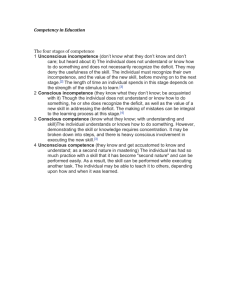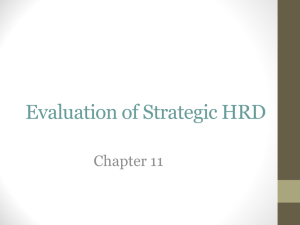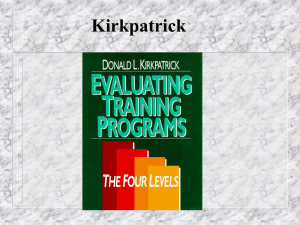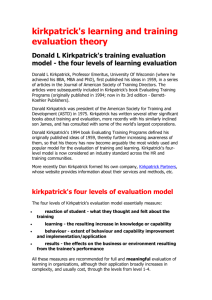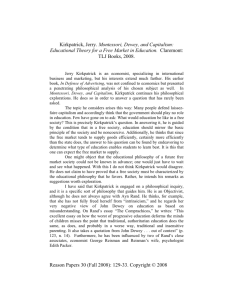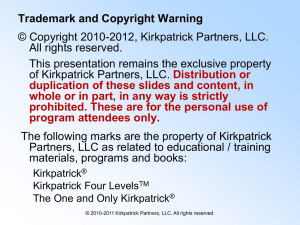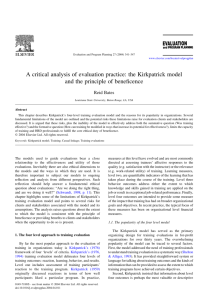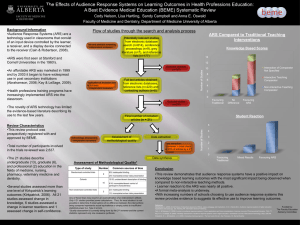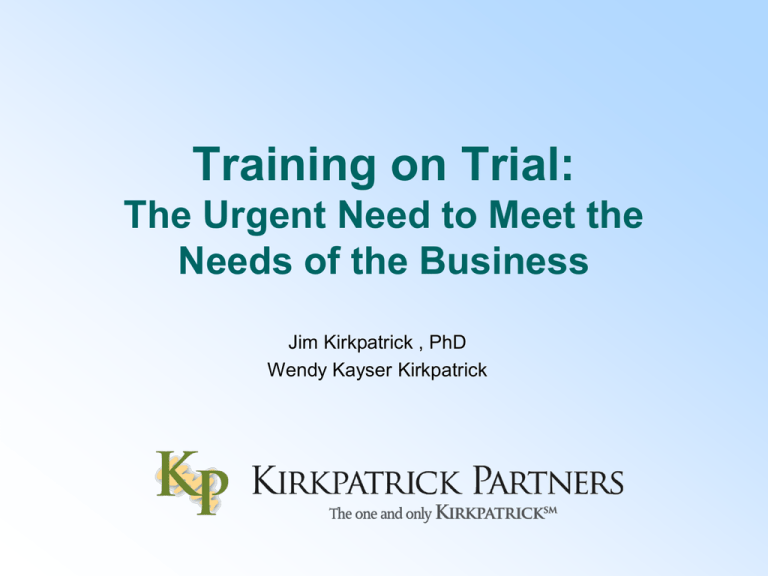
Training on Trial:
The Urgent Need to Meet the
Needs of the Business
Jim Kirkpatrick , PhD
Wendy Kayser Kirkpatrick
These slides are provided as a courtesy to those who have
attended one of our classes or presentations.
These are for internal use within your organization only; all
rights reserved.
We thank you in advance for respecting our intellectual
property and refraining from duplicating, distributing,
selling, or otherwise using this presentation in whole or
part for your own profit or promotion.
The following marks are the property of Kirkpatrick
Partners, LLC : The Kirkpatrick Business Partnership
ModelSM, KBPMSM, Return on ExpectationsSM, ROESM,
and Chain of EvidenceSM
© 2009 Kirkpatrick Partners, LLC. All rights reserved.
The future of training
“Training directors might be well advised to
take the initiative and evaluate their
programs before the day of reckoning
arrives”
- From Techniques for Evaluating Training
Programs, by Don Kirkpatrick
- ASTD Journal, November,
1959
© 2009 Kirkpatrick Partners, LLC. All rights reserved.
Percentage of learning transfer
1975: Percentage of formal learning that is
actually applied to the job:
15%
2005: Percentage of formal learning that is
actually applied to the job
15%
From Dana Robinson, ASTD ICE, 2008
© 2009 Kirkpatrick Partners, LLC. All rights reserved.
Brinkerhoff Study
Training Application
Did not try new skills: 15%
Tried new skills and failed: 70%
Achieved sustained new behaviors: 15%
- Josh Bersin and Associates, 2008
© 2009 Kirkpatrick Partners, LLC. All rights reserved.
Causes of “training failure”
Preparation and Readiness: 20%
Learning Intervention: 10%
Application Environment: 70%
2006 ASTD Study
© 2009 Kirkpatrick Partners, LLC. All rights reserved.
Typical Learning Investment
P re-W ork 10%
L earning E vent 85%
F ollow-Up 5%
Dr. Brent Peterson, Columbia University, 2004
©2009, all rights reserved.
“What is your job here at the hotel?”
“I am a window washer.”
©2009, all rights reserved.
“What is your job here at the resort?”
“I am part of a team that creates great experiences
for our guests!”
©2009, all rights reserved.
What will we have to do to be found
“not guilty”?
We need to extend our
role beyond the
traditional definitions of
learning.
•
•
•
•
•
©2009, all rights reserved.
Our expertise
Our involvement
Our influence
Our impact
Our value
Kirkpatrick Four Levels
Level 1: REACTION
How training participants react to the training
©2009, all rights reserved.
Kirkpatrick Four Levels
Level 2: LEARNING
To what degree participants acquire intended
knowledge, skills, and attitudes based on
participation in learning event
©2009, all rights reserved.
Kirkpatrick Four Levels
Level 3: BEHAVIOR
To what degree participants apply what they
learned during training on the job
©2009, all rights reserved.
Kirkpatrick Four Levels
Level 4: RESULTS
The final outcomes that occur as a result of the
training
©2009, all rights reserved.
The Kirkpatrick Business Partnership ModelSM
Identify
NECESSITIES For
Success
Results
PLEDGE to work
together
ADDRESS jury
issues
REFINE
expectations to
define outcomes
Learning
TARGET critical
behaviors and
required drivers
Determine
required KSAs,
Learning
Objectives
Reaction
Consider necessary
learning environment
Design and build learning program and evaluation tools
Deliver learning program
Analyze findings, adjust,
repeat steps as necessary
Business
need
identified
Behavior
Measure L2
Learning
Measure L1
Reaction
Initiate ongoing
reinforcement and
monitoring
Measure L4 Results
Measure L3
Behavior
Prepare Chain of EvidenceSM to demonstrate ROE
ROESM
Present L4 Results
findings
© 2009. All rights reserved.
Present L3
Behavior findings
Present L2
Learning findings
Present L1
Reaction findings
Kirkpatrick Four Level
Evaluation major principles
1.
2.
3.
4.
5.
The end is the beginning
ROESM is the ultimate indicator of value
Business partnership is key
Value must be created first
Demonstrate value through a compelling
Chain of EvidenceSM
©2009, all rights reserved.
Drivers –
encouragers or discouragers
Coaching
Mentoring
Refreshers
Critical
Behaviors
Business
Results
Executive
Modeling
Accountability
Level 3
Evaluation
©2009, all rights reserved.
Recognition
Evaluation methods
Evaluation Levels
1
Reaction
2
Learning
3
Behavior
4
Results
Survey
●
●
●
●
Questionnaire/Interview
●
●
●
●
Focus Group
●
●
●
●
Methods
Knowledge Test/Check
●
Work Review
●
●
Skills Observation
●
●
Presentations / Teach Back
●
Action Planning
●
●
●
●
Action Learning
●
Key Business HR Metrics
©2009, all rights reserved.
Chain of EvidenceSM
Level 1
Reaction
Level 2
Learning
Level 3
Behavior
Level 4
Results
Gather data at all four levels and show that your
training delivers true value to your organization.
©2009, all rights reserved.
Four Practical Ways to Increase
Training Effectiveness and Lower
Costs
1. Show them the data
2. Conduct an impact
study and showcase it
3. Review your training
curriculum
4. Redeploy your
resources to create
leverage
©2009, all rights reserved.
More Information and Support
• We offer the following resources to
organizations who want to ensure training
provides true business value:
– Consulting
– Impact studies
– In-house 2-day certification program
• We also offer:
– 2-day certification program public sessions
– Books, articles, and white papers
©2009, all rights reserved.
Seminar Hosting
• Interested in hosting a Kirkpatrick
seminar?
– Hosting organizations receive free seats in
the seminar (in exchange for providing a
venue and marketing support).
– For full details, please contact us.
©2009, all rights reserved.
www.kirkpatrickpartners.com
information@kirkpatrickpartners.com
(314) 961-4848
References
• Kirkpatrick, D.L. and J.D. Evaluating Training Programs,
3rd Ed., Berrett-Koehler Publ., Inc. San Francisco, CA,
2006
• Kirkpatrick, D.L. and J.D. Transferring Learning to
Behavior, Berrett-Koehler Publ., San Francisco, CA,
2005
• Kirkpatrick, D.L. and J.D. Implementing the Four Levels,
Berrett-Koehler Publ., San Francisco, CA, 2007
• Kirkpatrick, J.K., and W.K. Kirkpatrick Then and Now: A
Strong Foundation For the Future, Kirkpatrick Publishing,
St. Louis, MO, 2009
• Kirkpatrick, J.K., and W.K. Training on Trial, AMACOM,
New York, 2010
©2009, all rights reserved.

